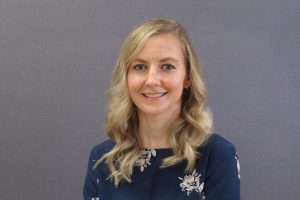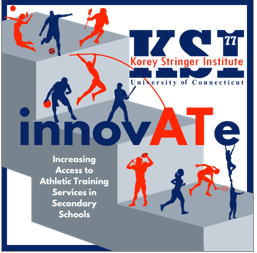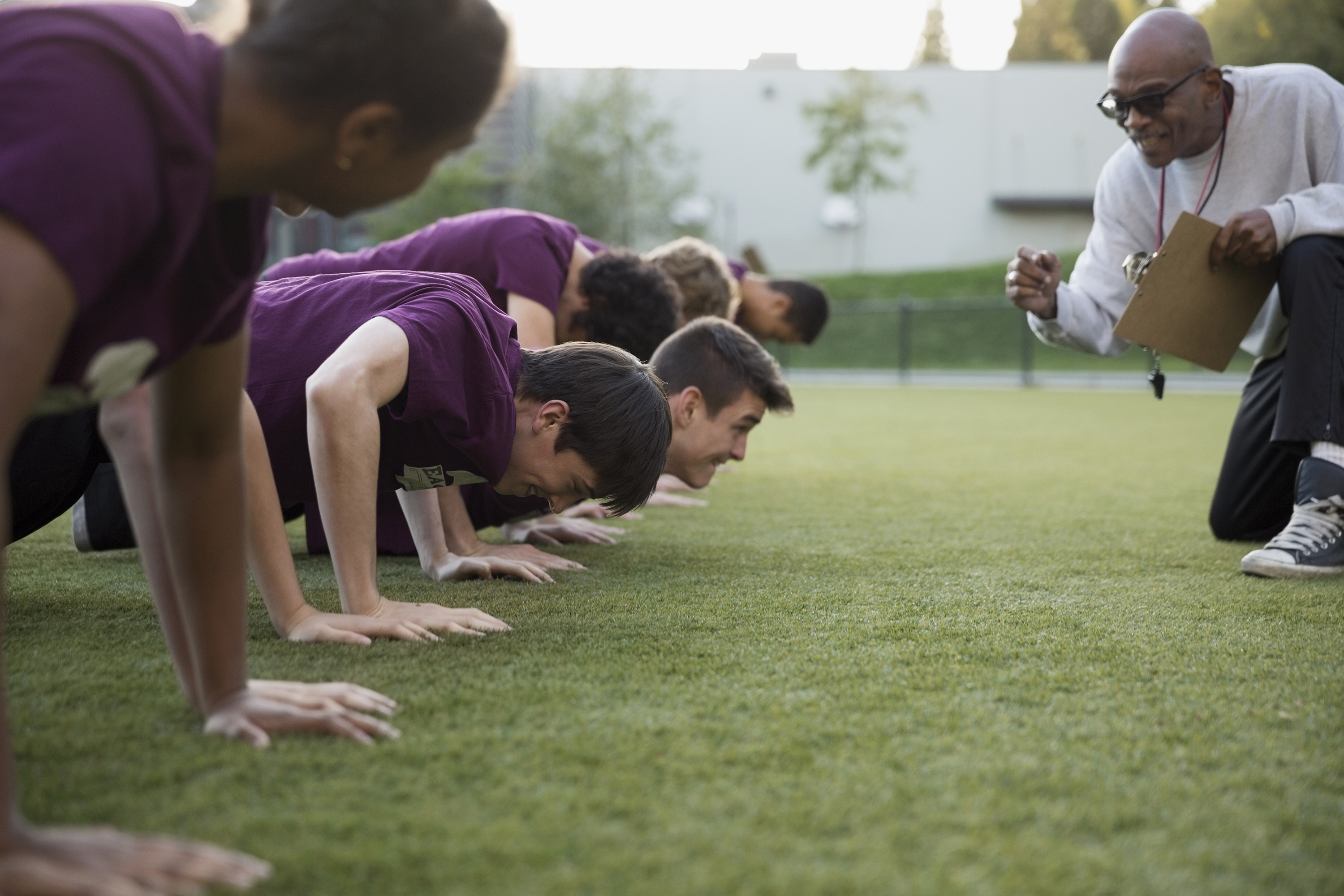UConn’s Korey Stringer Institute (KSI) has launched a new initiative to help provide important medical care via athletic training services to secondary school student athletes. The innovATe program, started this summer, is being administered by KSI and is funded by the Education Fund established as part of the settlement of the NFL Concussion Litigation.
“The innovATe project is a unique opportunity to support the addition of athletic training services in secondary schools across the country that have been traditionally underserved,” says Christianne Eason ’06 (EDU) ’16 (PhD), director of the innovATe program.
The program was inspired by a need to increase access to medical care provided by athletic trainers for secondary school athletes.

“The innovATe project will help bring desperately needed medical care to communities that deserve the same access to health care that can be provided by athletic trainers,” says Douglas Casa, ATC, Korey Stringer Institute CEO and Professor of Kinesiology. “The innovATe project is an opportunity for KSI to take what we have learned from all of our initiatives and help make tangible changes. The addition of athletic trainers is a critical step in protecting the health and safety of student athletes at these schools.”
One of the KSI research projects vital to this program is the ATLAS survey database that details athletic training services available at every public and private high school in the U.S. “Thirty-five percent of schools have full-time athletic trainers, thirty-nine percent have part-time athletic trainers and thirty-four percent do not have any athletic training services at all,” says Eason.
While sports do come with risks, athletic trainers help to mitigate those risks, which includes expertise with exertional heat stroke, concussion, injuries, and training protocols.
“We know through research at the KSI, that exertional heat stroke is a medical emergency, and if identified and properly treated is one hundred percent survivable,” Eason points out. “Unfortunately, there are situations where there is no medical provider present and a big part of this program is providing educational support. We will be working with the National Athletic Trainers Association to provide education and mentoring for all athletic trainers hired through this program. We want to ensure that they are following best practices.”
Using the ATLAS data to identify areas of need, the team will initially involve ten to fourteen school districts, with a long-term goal of placing athletic trainers all over the country. They will partner with area medical facilities and local university athletic training programs. “Data shows that when an athletic trainer is available in high schools, injury rates decrease and return to sport increases,” Eason notes. “Athletic trainers often serve as a gatekeeper, to facilitate connections with other health care providers.”
They will also be partnering with the NFL Players Association to have NFL player ambassadors serve as program advocates.
“Our goal is to create sustainable partnerships in the community,” Eason says. “If a school has never had an athletic trainer, they might not know how to even go about hiring an athletic trainer, setting up a budget, or creating a program.”

Athletic training requires a master’s degree and successful completion of a certification exam. Athletic trainers are educated in injury prevention, diagnosis, treatment and rehabilitation, and emergency response. There might be student athletes dealing with chronic conditions such as diabetes, asthma, sickle cell disease, as well as head, muscular and heat emergencies.
“Sport is an important part of many young people’s lives and it can provide invaluable experiences and opportunities,” Eason says. “Injuries do happen though and sadly some of those injuries are catastrophic. Athletic trainers are educated to help prevent the incidence of these catastrophic events and also to provide appropriate care when medical emergencies happen. Athletic trainers are also an important educational resource for secondary school sports programs.”
The KSI team plans to identify the first cohort of schools by next spring, with athletic trainers placed on site by the summer. They will fund three to four districts per year, each for three years.
“I’m a big believer in personal and professional advocacy and I think this program has the potential to make a large impact,” Eason says. “KSI is doing incredible work but if there is not a health care provider in the schools to implement all the amazing things we are learning from our research, then we are not able to put that research into action. This project provides a good synergy with what is going on at the KSI and real-world application.”
She adds: “Our goal is to establish sustainability, and I think if we do that well there is opportunity to continue this work in the future. Athletic trainers at secondary schools can be one of the best advocates for our profession, and there is a potential for a ripple effect to other schools. If students have a positive relationship with their high school athletic trainer, students and parents see the value of a program.”



